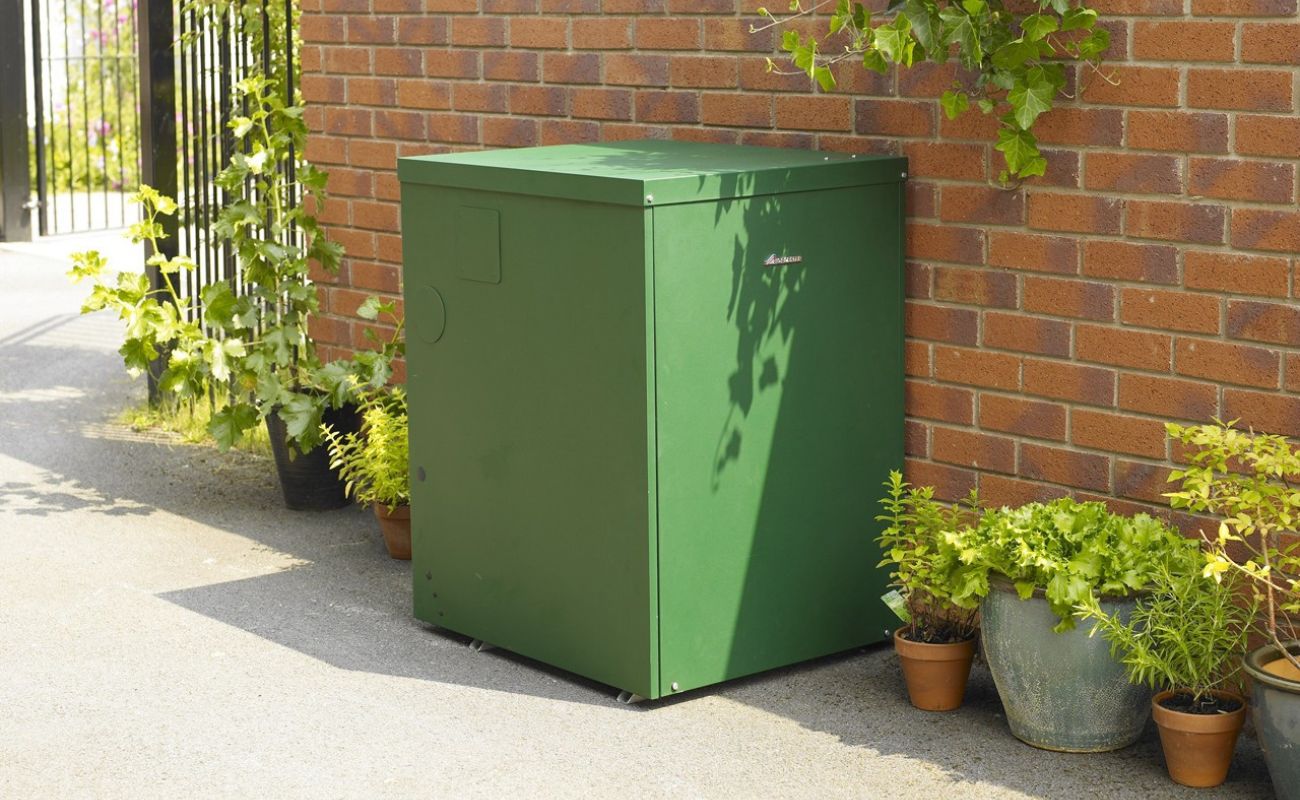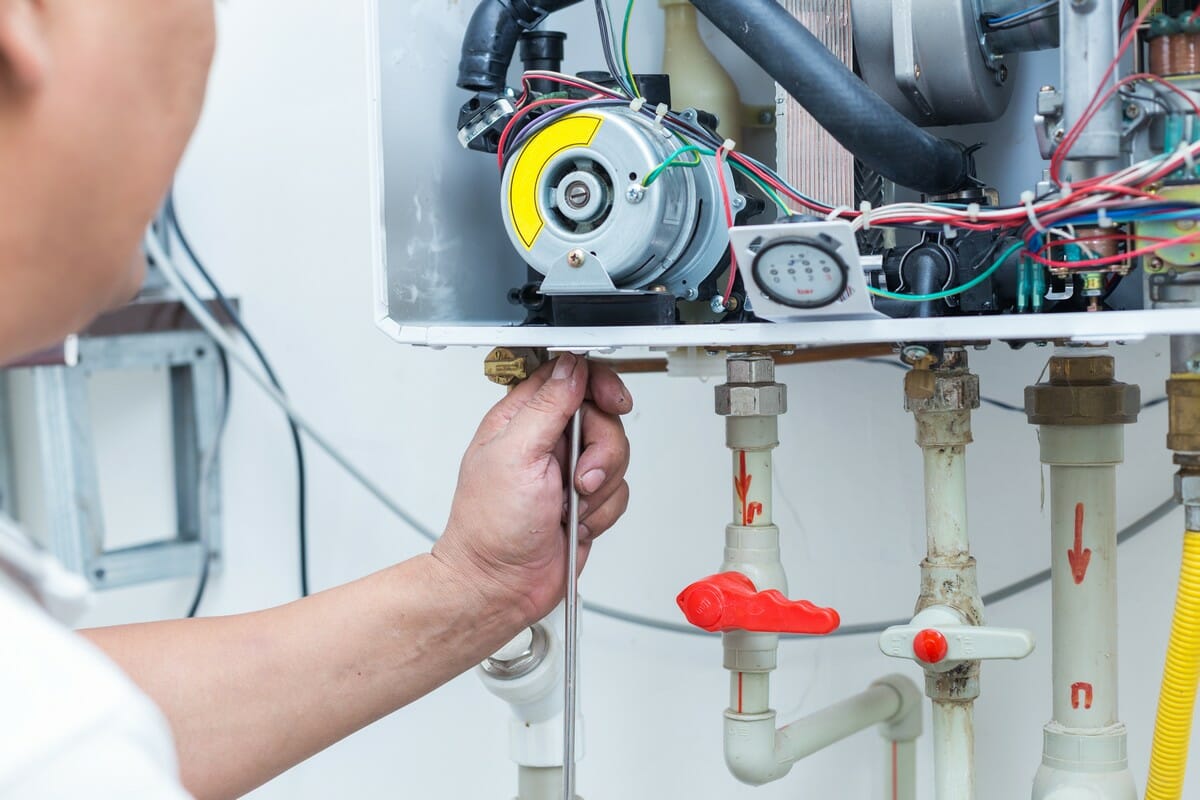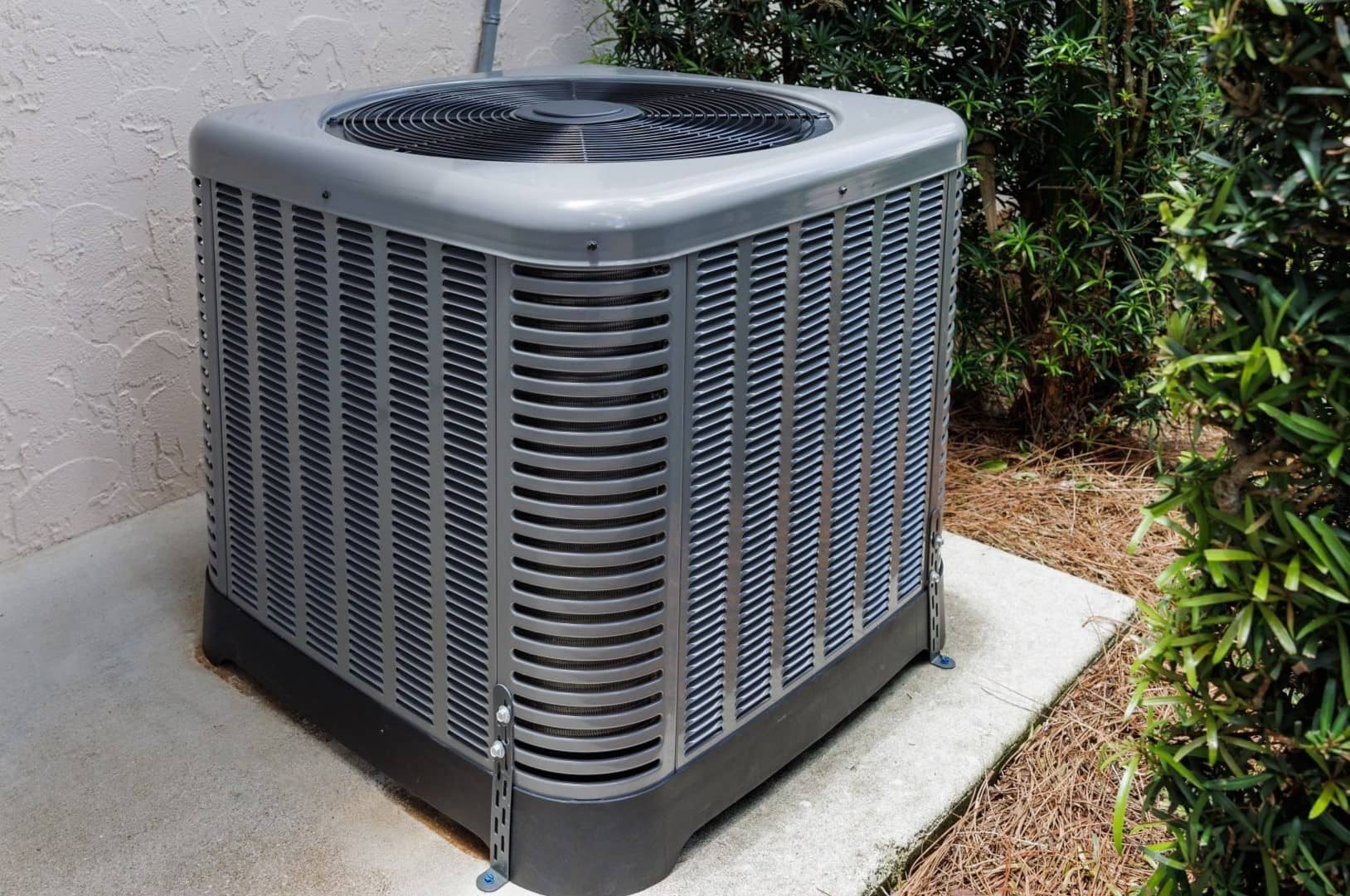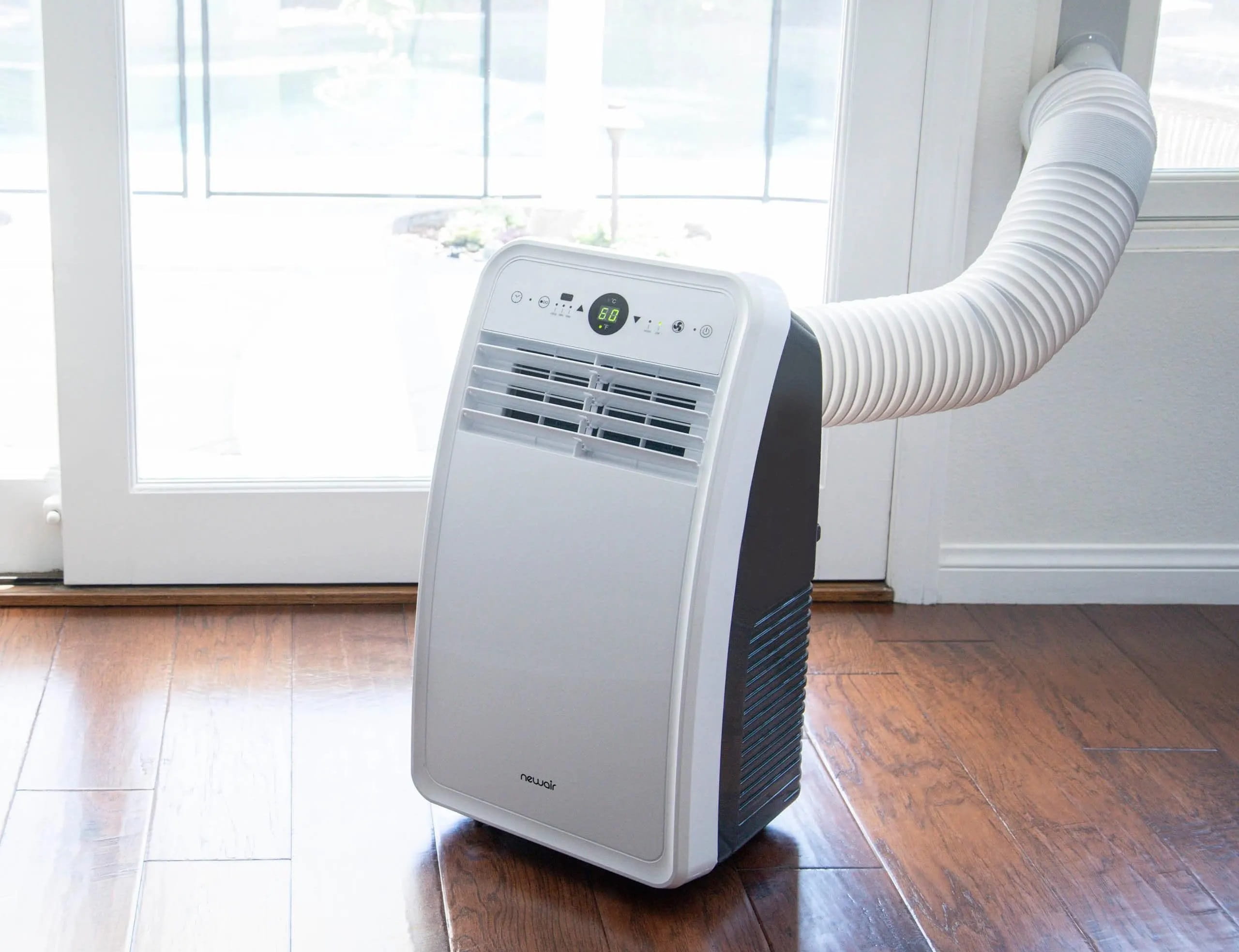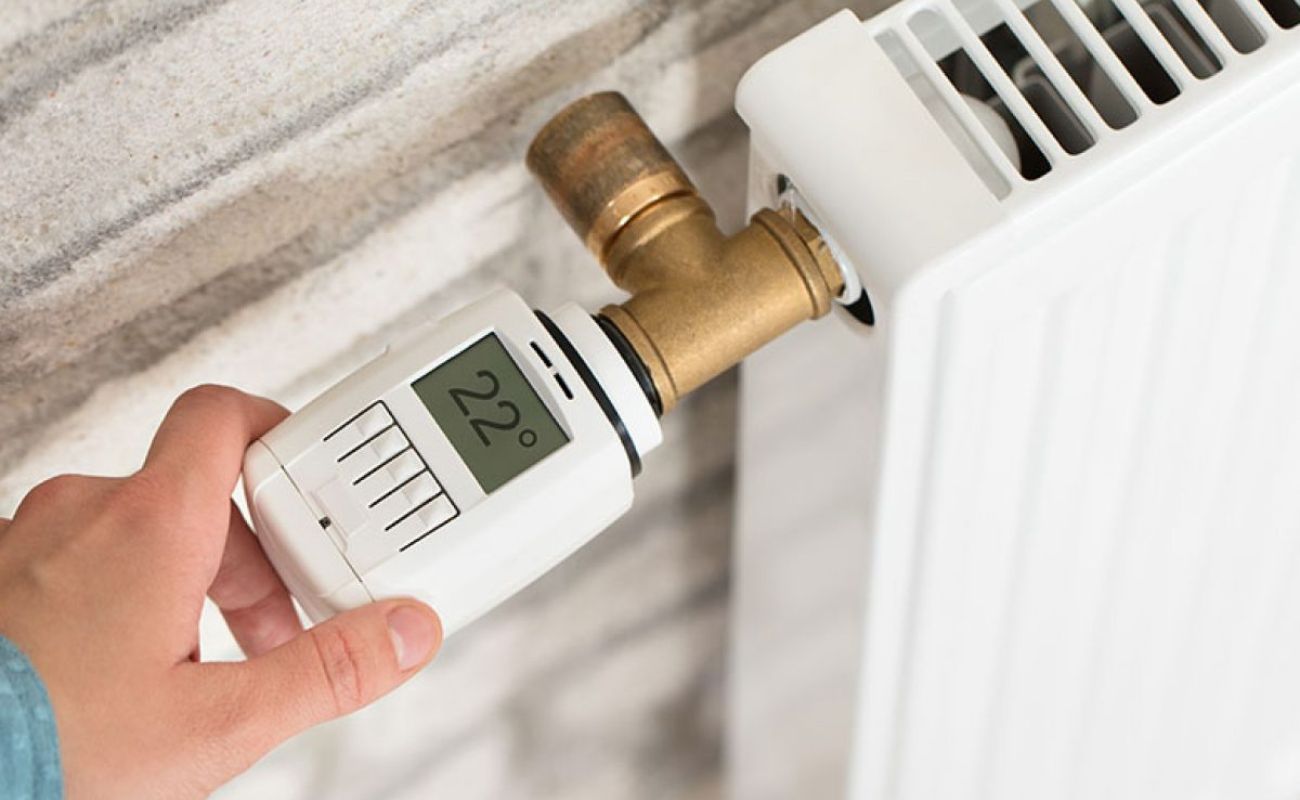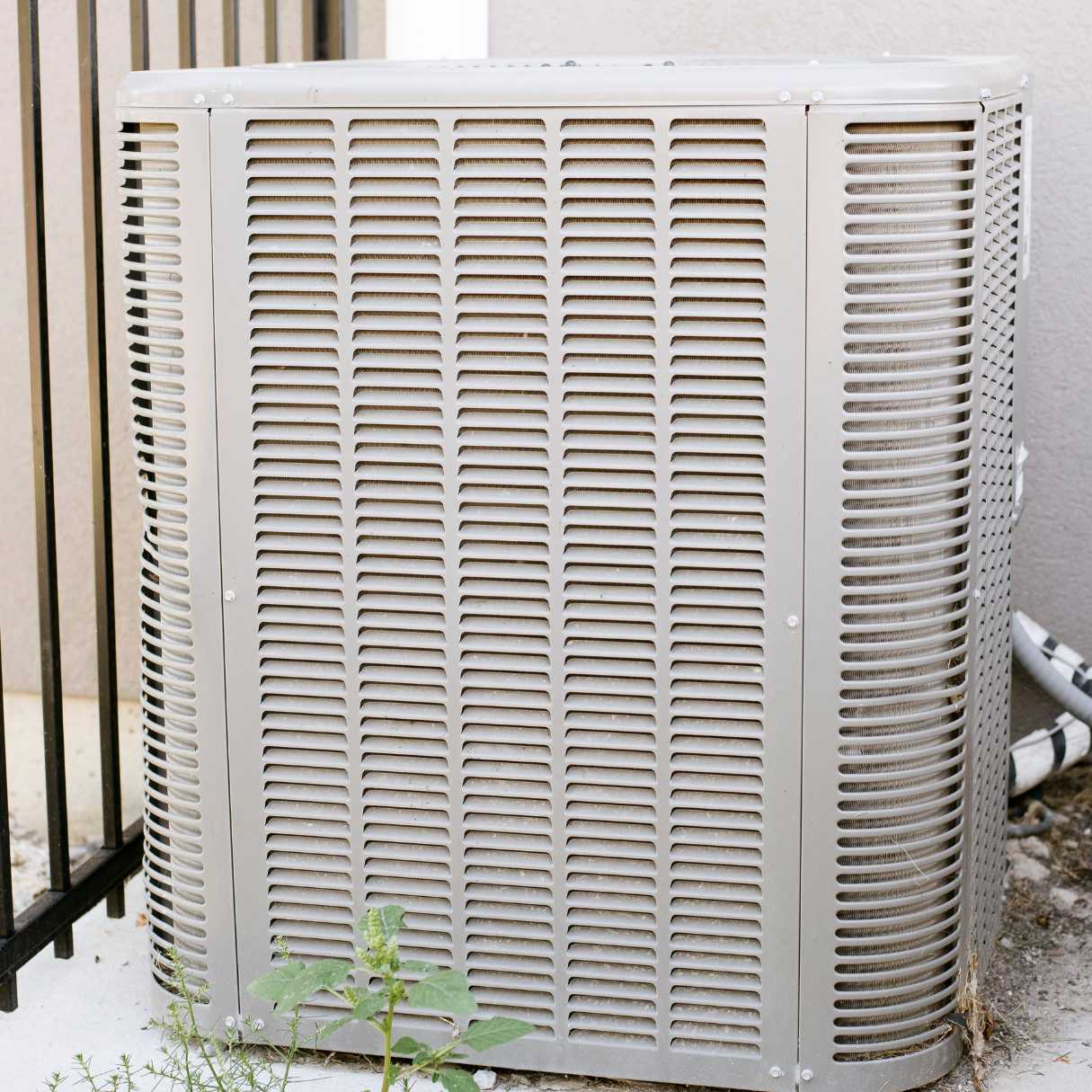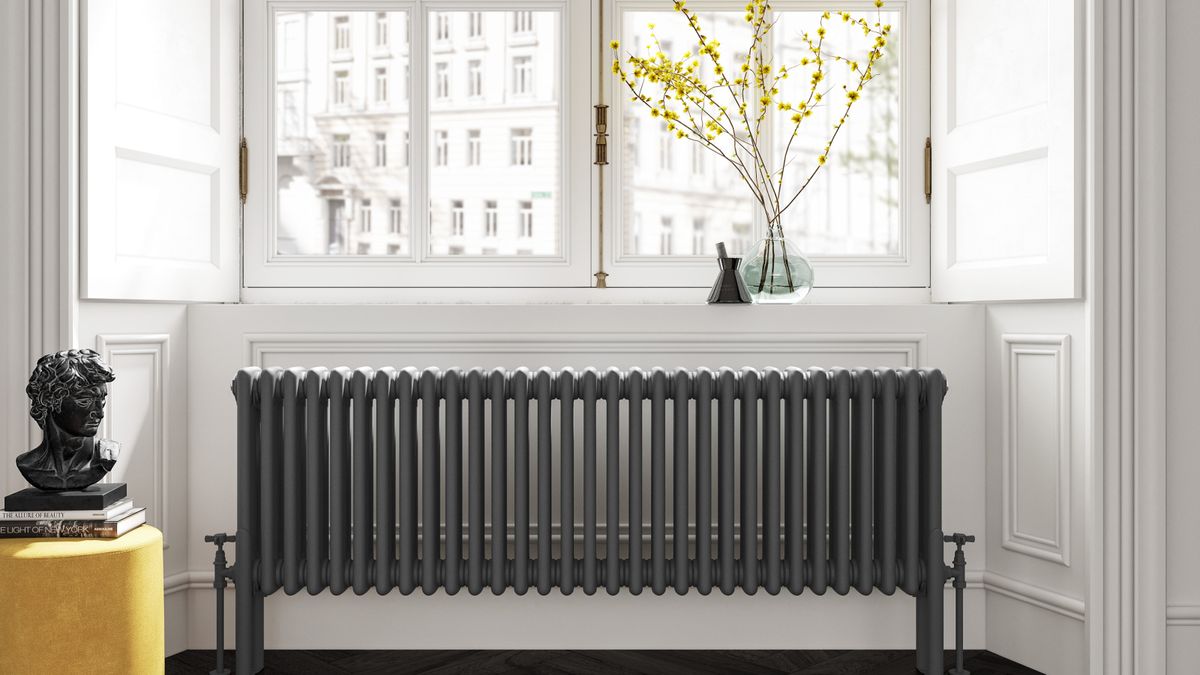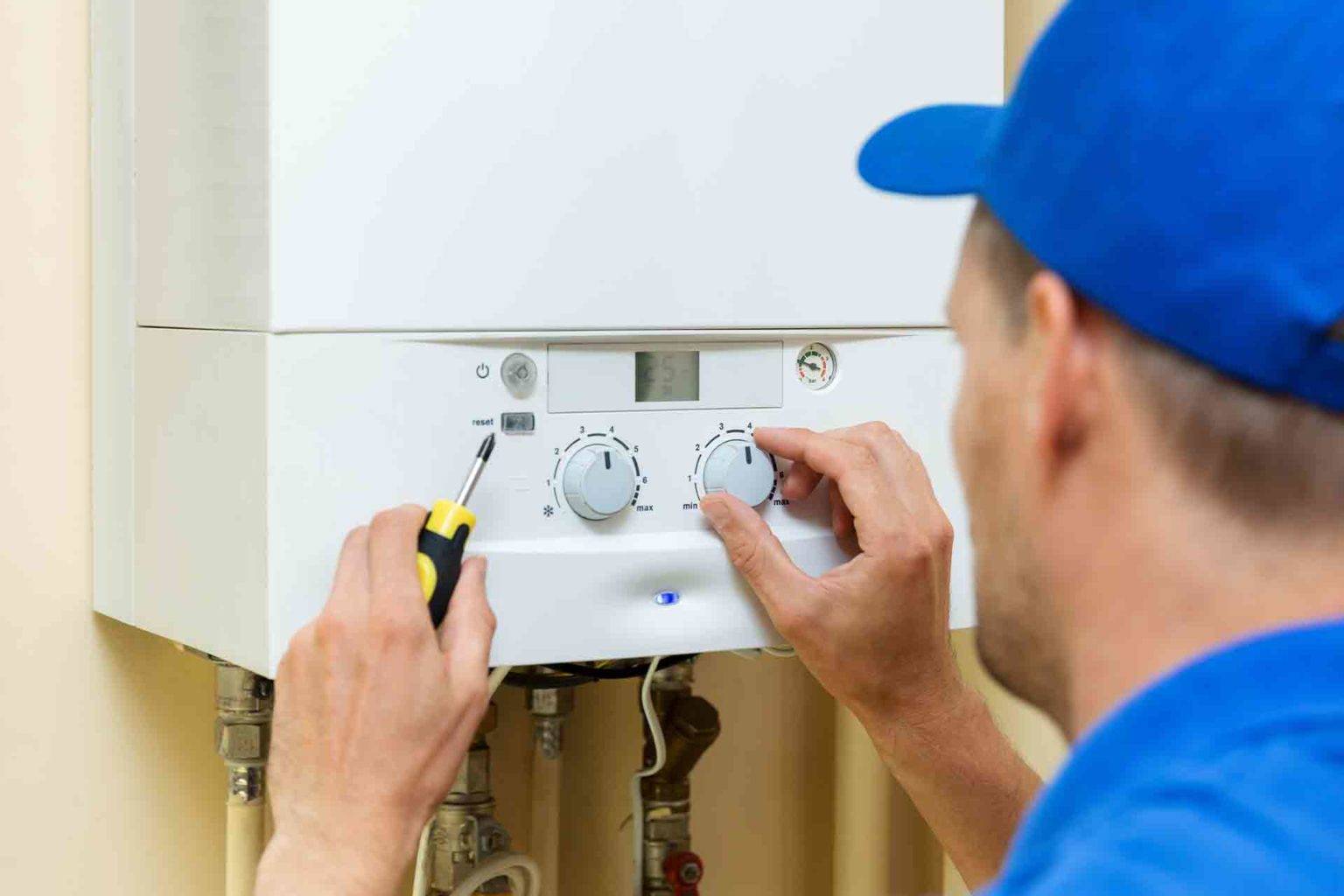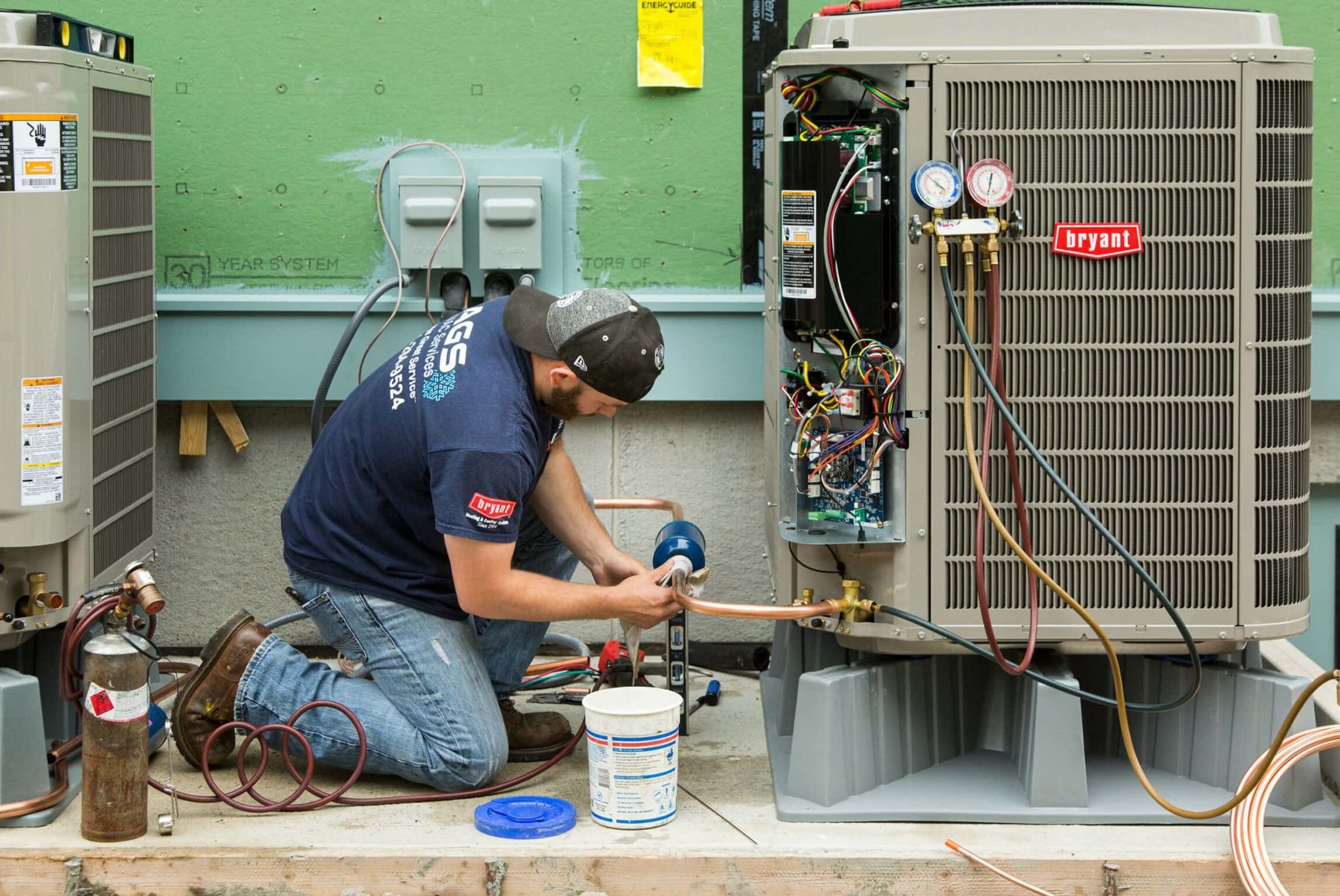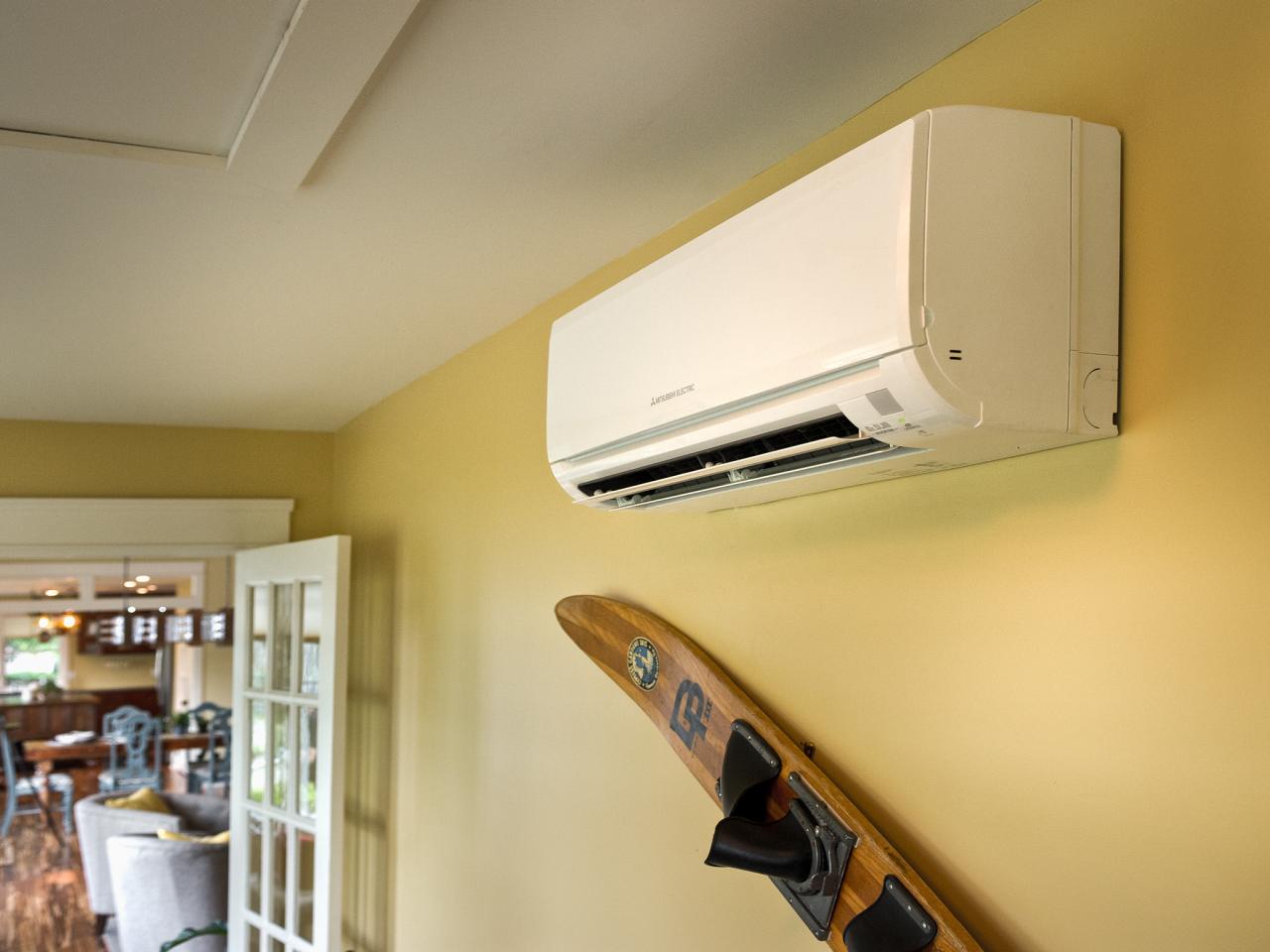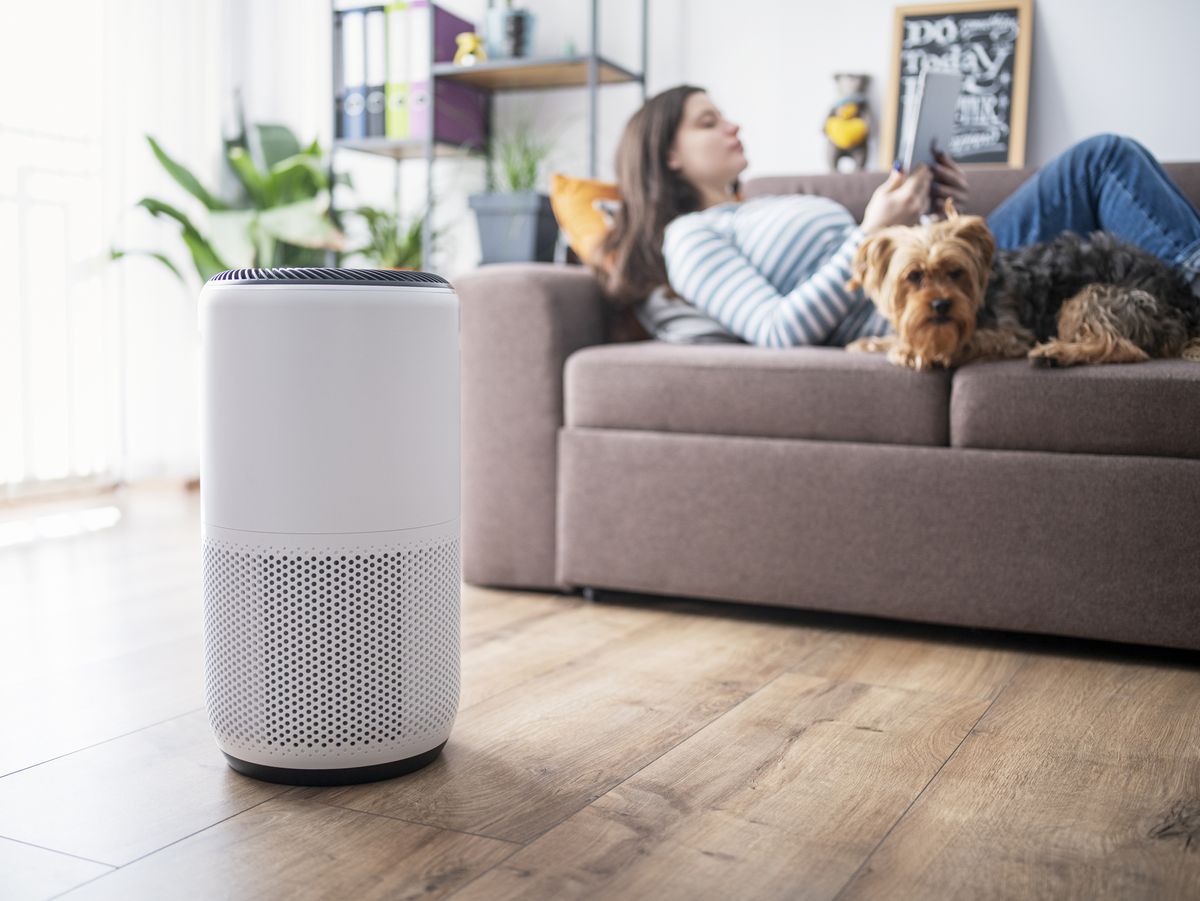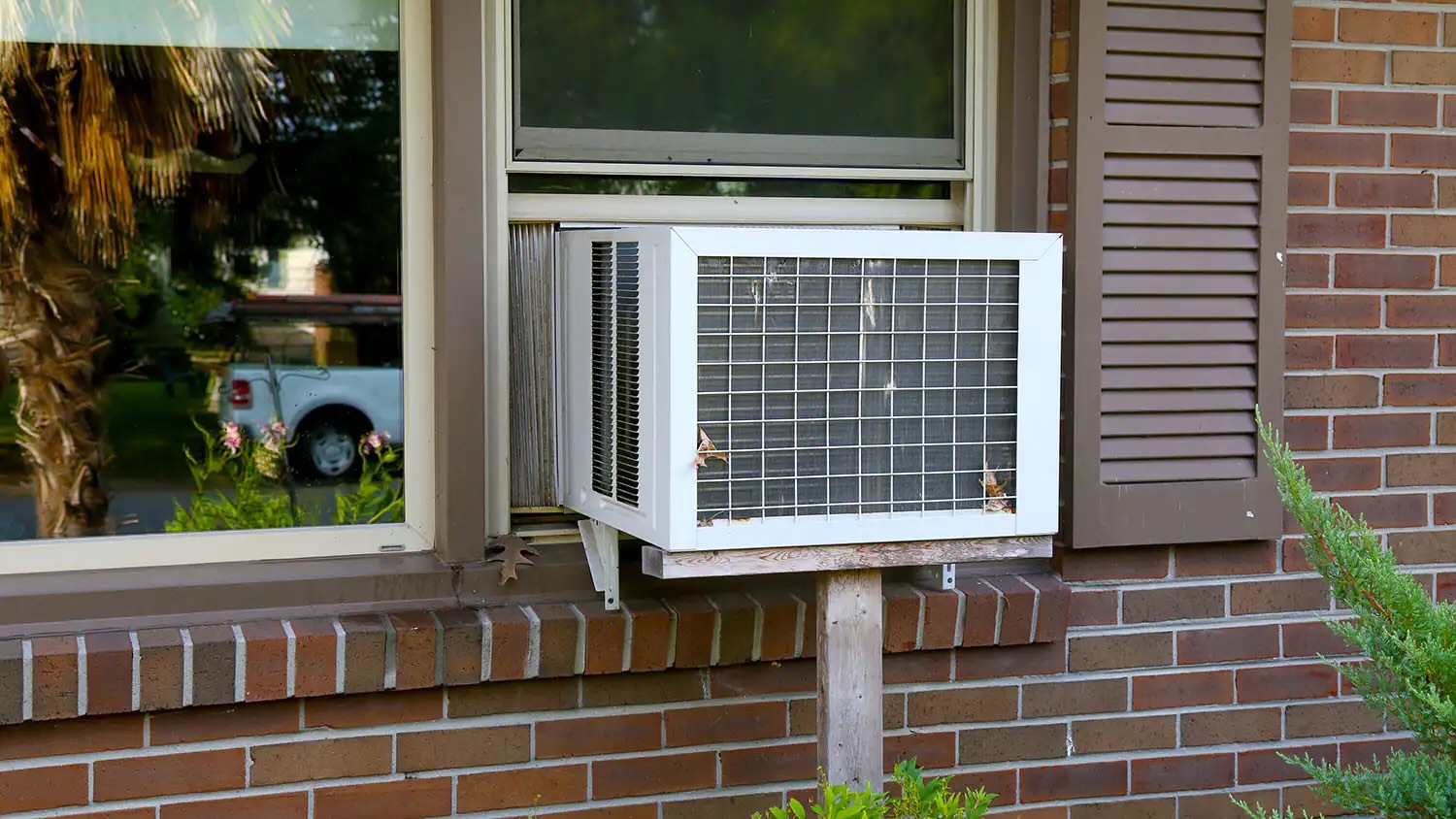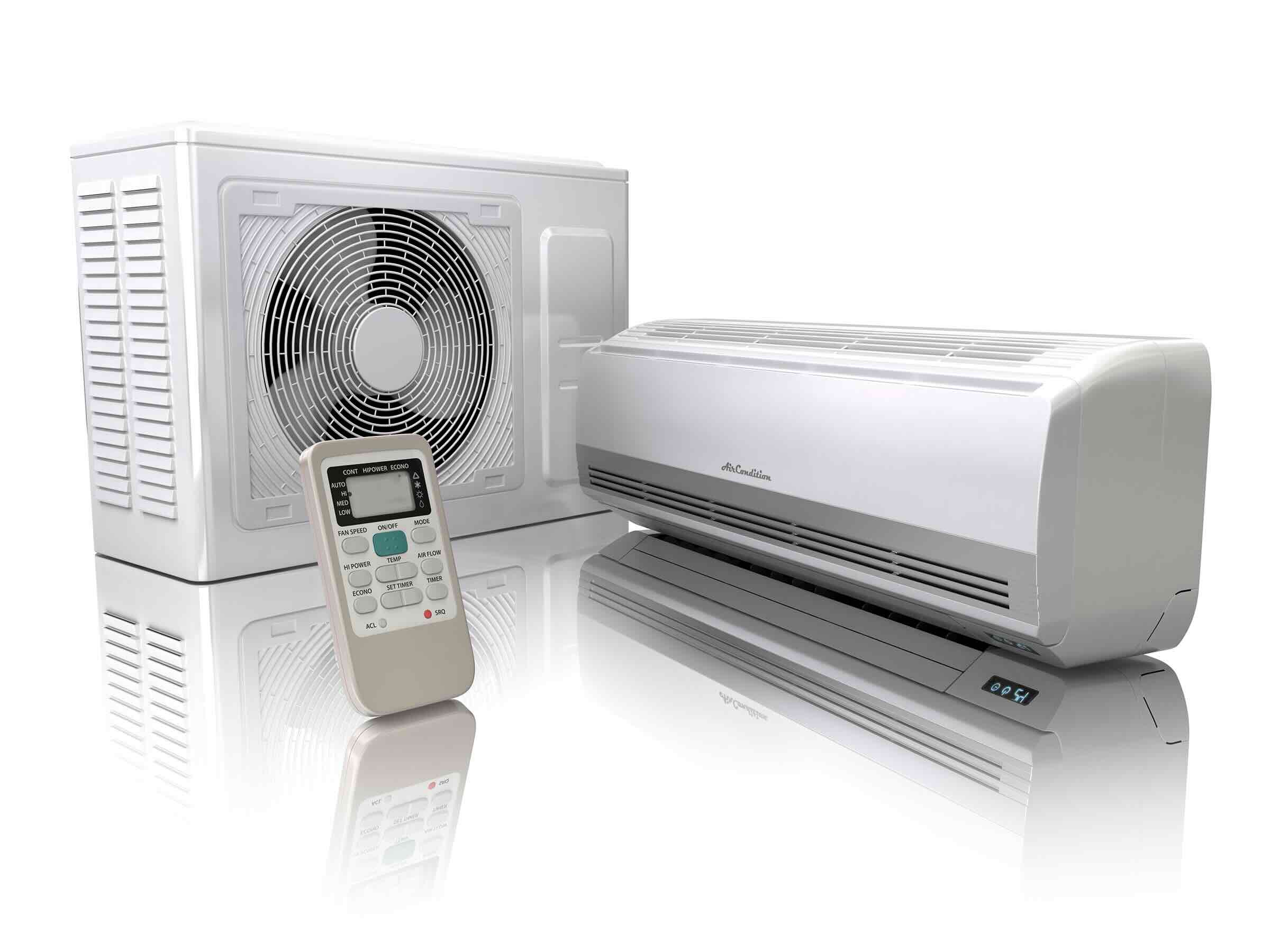Home>Home Maintenance>How Does A Central Air Conditioner Work?
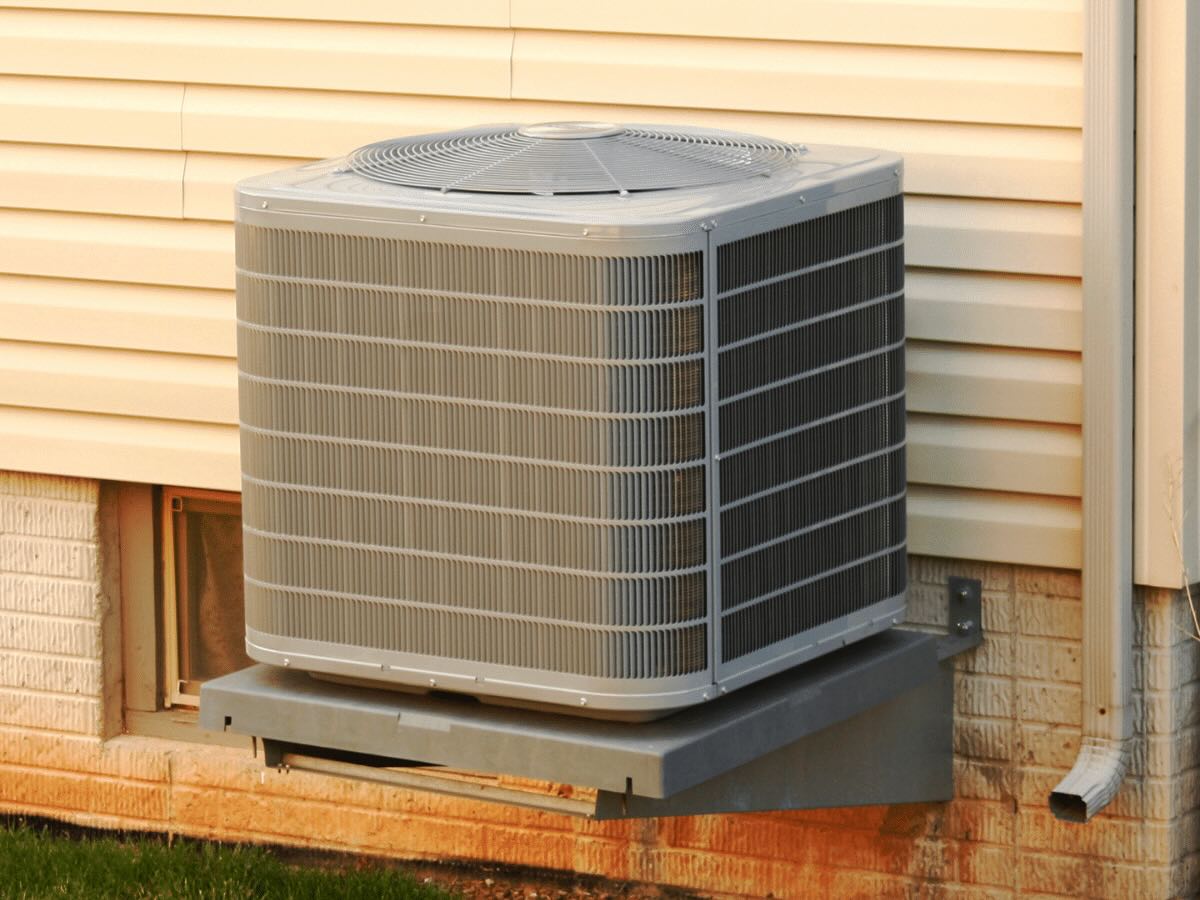

Home Maintenance
How Does A Central Air Conditioner Work?
Modified: September 1, 2024
Learn how central air conditioners work and keep your home cool with efficient home maintenance. Find out everything you need to know about maintaining your central air conditioning system.
(Many of the links in this article redirect to a specific reviewed product. Your purchase of these products through affiliate links helps to generate commission for Storables.com, at no extra cost. Learn more)
Introduction
Welcome to the world of central air conditioning! As the temperature rises outside, there’s nothing quite like walking into a cool and comfortable home. But have you ever stopped to think about how your central air conditioner actually works? In this article, we’ll take a closer look at the components and mechanisms behind a central air conditioning system.
A central air conditioner works by removing heat and humidity from the air inside your home, leaving you with a pleasant and refreshing indoor environment. It consists of several key components that work together to achieve this goal. Understanding how these components operate will not only give you a better appreciation for the technology but also help you troubleshoot any issues that may arise.
So, let’s dive in and explore the fascinating world of central air conditioning!
Key Takeaways:
- Central air conditioners work by removing heat and humidity from indoor air using components like the condenser unit, evaporator coil, and thermostat. Understanding how they work can help troubleshoot issues and appreciate the technology.
- The refrigeration cycle, including compression, condensation, expansion, and evaporation, is the heart of central air conditioning. It continuously removes heat from indoor air, providing consistent and comfortable cooling throughout the home.
Read more: How Does Home Central Air Conditioning Work
Components of a Central Air Conditioner
A central air conditioner is composed of several essential components that work in harmony to cool your home. Let’s take a closer look at each of these components:
- Condenser Unit: The condenser unit is located outside your home and plays a vital role in the cooling process. It consists of a compressor, condenser coil, and a fan. The compressor circulates the refrigerant, which carries the heat away from your home. The condenser coil releases the heat into the outdoor air, and the fan helps to dissipate the heat efficiently.
- Evaporator Coil: The evaporator coil is located inside your home and is connected to the condenser unit. It absorbs heat from the indoor air and cools it down. The cooled air is then circulated back into your home through the ductwork.
- Air Handler: The air handler is responsible for circulating the cooled air throughout your home. It consists of a blower motor, a fan, and a filter. The blower motor powers the fan, which pushes the cooled air through the ductwork and into the various rooms of your home. The filter helps to remove dust, pollen, and other airborne particles, improving the air quality.
- Refrigerant: The refrigerant is a chemical compound that absorbs heat from the indoor air and carries it to the condenser unit. It undergoes a continuous cycle of compression and expansion, allowing it to transfer heat effectively.
- Ductwork: The ductwork is a network of pipes or channels that distribute the cooled air throughout your home. It delivers the conditioned air to each room, ensuring consistent cooling.
- Thermostat: The thermostat acts as the control center for your central air conditioner. It allows you to set the desired temperature in your home and regulates the operation of the cooling system accordingly. Modern thermostats even offer programmable features, allowing you to schedule temperature changes throughout the day.
These components work together seamlessly to provide a comfortable and climate-controlled environment inside your home.
The Refrigeration Cycle
The refrigeration cycle is the heart of a central air conditioning system. It is a continuous process that removes heat from the indoor air and releases it into the outdoor environment. The cycle consists of four main steps: compression, condensation, expansion, and evaporation. Let’s explore each step in detail:
- Compression: The process begins with the compressor, which pressurizes the refrigerant gas, increasing its temperature and pressure. As the gas is compressed, it becomes superheated and enters the condenser coil.
- Condensation: In the condenser coil, the superheated refrigerant gas transfers its heat to the outdoor air. The heat exchange causes the refrigerant to condense into a high-pressure liquid. The condenser fan helps to dissipate the heat, allowing the refrigerant to cool down further.
- Expansion: The high-pressure liquid refrigerant then enters the expansion valve, where its pressure is reduced. As it expands, its temperature drops significantly, preparing it for the next step in the cycle.
- Evaporation: The cold liquid refrigerant now enters the evaporator coil inside your home. As warm air from your home passes over the coil, the refrigerant absorbs the heat, causing it to evaporate into a low-pressure gas. The blower fan then circulates the newly cooled air back into your home.
This continuous cycle repeats as long as your central air conditioner is running, providing you with a consistent and comfortable indoor climate. The refrigerant, in its gaseous state, then returns to the compressor to start the process all over again.
It’s important to note that during this cycle, the refrigerant does not get consumed or depleted. It simply changes its state from gas to liquid and back to gas, absorbing and releasing heat along the way.
Step 1: Compression
In the refrigeration cycle, the first step is compression. This process takes place in the compressor, which is a crucial component of your central air conditioner.
When the refrigerant gas enters the compressor, it is in a low-pressure state. The compressor then works to increase the pressure and temperature of the gas. It does this by compressing the gas using a piston or a rotor, depending on the type of compressor.
As the refrigerant gas is compressed, the molecules within it become tightly packed, resulting in an increase in pressure and temperature. The compressor essentially squeezes the gas, causing its energy to rise. This high-energy gas is now in a superheated state.
The compression process in the compressor is powered by an electric motor. The motor drives the piston or rotor, creating the necessary force to compress the gas. Proper lubrication is crucial for the compressor’s smooth operation, as it ensures minimal friction and wear.
By compressing the refrigerant gas, the compressor prepares it for the next stage of the refrigeration cycle: condensation.
It’s important to keep the compressor in good working condition to ensure the efficiency and effectiveness of your central air conditioner. Regular maintenance, including cleaning, lubrication, and inspection of the compressor, can help prolong its lifespan and prevent potential breakdowns.
Now that we’ve covered the first step of the refrigeration cycle, let’s move on to the next stage: condensation.
Step 2: Condensation
After the refrigerant gas is compressed in the first step of the refrigeration cycle, it moves on to the second step: condensation. This crucial stage takes place in the condenser coil, another important component of your central air conditioner.
As the superheated refrigerant gas exits the compressor, it enters the condenser coil located outside your home. The main purpose of the condenser coil is to release the heat absorbed from the indoor air. This heat exchange process occurs as the refrigerant transitions from a high-pressure gas to a high-pressure liquid.
As the superheated refrigerant gas enters the condenser coil, it releases heat to the surrounding outdoor air. This transfer of heat causes the refrigerant to cool down and condense into a high-pressure liquid. The condenser coil is designed with fins to maximize surface area and improve heat transfer efficiency.
In addition to the heat transfer, a condenser fan assists in dissipating the heat, further cooling down the refrigerant. The condenser fan blows air over the condenser coil, removing the excess heat and helping stabilize the temperature of the refrigerant.
During the condensation process, the outside air and the refrigerant interact. The refrigerant releases heat to the outdoor air, causing a rise in temperature, while the outdoor air cools down slightly due to the heat absorption. The now-cooled liquid refrigerant continues its journey to the expansion valve, the next step in the refrigeration cycle.
Proper maintenance and cleaning of the condenser coil are crucial to ensure optimal heat exchange and efficient cooling. Over time, dirt, debris, and dust can accumulate on the coil’s surface, inhibiting its ability to transfer heat effectively. Regular cleaning and inspection can help maintain the condenser coil’s performance and prevent potential issues.
Now that we’ve covered the condensation process, let’s move on to the next step: expansion.
Read more: How To Choose A Central Air Conditioner
Step 3: Expansion
In the refrigeration cycle, the third step is expansion, which takes place at the expansion valve. This important stage allows the high-pressure liquid refrigerant to transition into a low-pressure liquid, preparing it for the next phase of the cycle: evaporation.
As the high-pressure liquid refrigerant exits the condenser coil, it enters the expansion valve. The valve serves as a gateway between the condenser and evaporator coils. Its primary function is to regulate the flow of refrigerant and reduce its pressure.
Inside the expansion valve, the refrigerant undergoes a rapid expansion. This decrease in pressure causes the refrigerant’s temperature to drop significantly. The process is similar to the release of pressure from a compressed gas canister, resulting in a cooling effect.
As the refrigerant expands, it transforms from a high-pressure liquid into a low-pressure mixture of liquid and vapor. This cooled liquid refrigerant is now ready for the next stage of the refrigeration cycle: evaporation.
The expansion valve plays a critical role in controlling the refrigerant flow rate and maintaining the desired cooling effect in your central air conditioner. Proper adjustment and maintenance of the expansion valve are necessary to optimize the overall performance and efficiency of the system.
Now that we’ve covered the expansion process, let’s move on to the final step of the refrigeration cycle: evaporation.
Step 4: Evaporation
In the refrigeration cycle, the final step is evaporation, where the low-pressure liquid refrigerant transitions into a low-pressure gas or vapor. This process takes place in the evaporator coil, an integral part of your central air conditioner.
As the cooled liquid refrigerant exits the expansion valve, it enters the evaporator coil, which is typically located indoors. The evaporator coil consists of a network of tubes that allow the refrigerant to expand and come into contact with the warm indoor air.
As the warm air from your home passes over the surface of the evaporator coil, the refrigerant absorbs the heat from the air. This heat exchange causes the refrigerant to evaporate into a low-pressure gas or vapor.
During the evaporation process, the refrigerant extracts heat from the surrounding air, cooling it down significantly. The blower fan, located in the air handler, pushes the cooled air through the ductwork and distributes it to the various rooms of your home.
As the refrigerant completes the evaporation process, it becomes a low-pressure gas or vapor and is ready to continue the refrigeration cycle. It then returns to the compressor to start the process again.
The evaporator coil is a crucial component for efficient cooling and dehumidification of the indoor air. The coil must be kept clean and free from dust and debris to ensure unrestricted airflow and optimal heat exchange.
Now that we’ve covered the evaporation process, we’ve completed a full cycle of the refrigeration process. The refrigerant, in its gaseous state, is ready to be compressed again to continue the cooling cycle.
Regular maintenance, such as cleaning or replacing the air filters, can improve the efficiency and lifespan of your central air conditioner.
Ductwork and Ventilation
In a central air conditioning system, ductwork and ventilation play a crucial role in distributing the cooled air throughout your home and maintaining proper airflow. Let’s explore how ductwork and ventilation contribute to the overall performance of your central air conditioner.
Ductwork serves as the pathway for conditioned air to travel from the air handler to different rooms in your home. The ducts are typically made of metal or flexible materials and are strategically placed to ensure efficient airflow. They can be installed in your walls, floors, or ceilings, depending on the layout of your home.
The main duct, often referred to as the trunk line, branches off into smaller ducts, known as supply ducts, that deliver cooled air to each room. These supply ducts have adjustable vents or registers that allow you to control the airflow and distribute the air evenly throughout your home.
In addition to supply ducts, there are also return ducts that carry the warm air from inside your home back to the air handler for reconditioning. These ducts help maintain a balanced airflow and improve the overall efficiency of your central air conditioner.
Proper ductwork design and installation are crucial for optimizing cooling efficiency and airflow. Well-insulated and sealed ducts help prevent energy waste and maintain consistent temperature levels in every room. Leaky or uninsulated ducts can lead to air loss, decreasing the system’s efficiency and causing potential hot or cold spots in your home.
Duct maintenance is also essential to ensure optimal performance. Regularly inspecting and cleaning your ducts helps remove dust, debris, and potential allergens, promoting cleaner indoor air quality and preventing airflow restrictions.
Additionally, proper ventilation in your home is essential to maintain a healthy and comfortable living environment. Ventilation systems help exchange stale indoor air with fresh outdoor air, enhancing air quality and reducing odors and moisture accumulation.
Some central air conditioning systems are designed to incorporate ventilation features, such as ducted fresh air intakes or energy recovery ventilators (ERVs). These systems allow for the controlled introduction of outdoor air while minimizing energy loss. Proper ventilation can help improve indoor air quality, reduce mold and humidity issues, and create a more comfortable living space.
By ensuring well-designed ductwork and incorporating proper ventilation, you can maximize the effectiveness of your central air conditioning system and enjoy a consistently comfortable and healthy indoor environment.
Thermostat and Temperature Regulation
The thermostat is a crucial component of your central air conditioning system that helps regulate and maintain the desired temperature in your home. Let’s explore how the thermostat works and its role in temperature regulation.
The thermostat acts as the control center for your central air conditioner. It allows you to set the desired temperature, usually through a digital display or a dial. When the temperature in your home exceeds the set temperature, the thermostat signals the air conditioner to start cooling.
Modern thermostats often come with additional features that enhance temperature regulation and energy efficiency. Some thermostats have programmable settings that allow you to set different temperature levels based on your daily schedule. For example, you can program the thermostat to lower the temperature during the day when you’re at work and then raise it before you return home.
Other advanced thermostats may have Wi-Fi connectivity, allowing you to control and monitor your central air conditioner remotely through a smartphone app or a web interface. This feature provides convenience and flexibility, as you can adjust the temperature settings even when you’re away from home.
Thermostats can also include sensors that measure the temperature and humidity levels in your home. These sensors help the thermostat determine when the cooling system should turn on or off to maintain the desired comfort level. Additionally, some thermostats have smart features that can learn your preferences and adjust the temperature automatically to save energy.
Proper thermostat placement is crucial for accurate temperature regulation. It should be installed away from heat sources, direct sunlight, and drafts to avoid incorrect temperature readings. Ideally, the thermostat should be placed in a central location within your home to provide an accurate reflection of the overall temperature.
By utilizing a well-functioning thermostat and taking advantage of its features, you can optimize temperature control and reduce energy consumption. Adjusting the temperature settings based on your occupancy and comfort preferences can help you save on cooling costs while ensuring a comfortable indoor environment.
Overall, the thermostat is a vital tool in your central air conditioning system, providing precise temperature control and allowing you to customize your cooling experience.
Read more: How Does Central AC Work
Benefits and Drawbacks of Central Air Conditioning
Central air conditioning offers numerous benefits, making it a popular choice for homeowners seeking to maintain a comfortable indoor environment. However, like any other system, it also has its drawbacks. Let’s explore the benefits and drawbacks of central air conditioning:
Benefits:
1. Consistent Cooling: Central air conditioning provides consistent cooling throughout your entire home. Every room receives an equal amount of cool air, ensuring a comfortable and pleasant environment.
2. Improved Indoor Air Quality: Central air conditioning systems come with advanced filtration capabilities, removing dust, pollen, and other allergens from the air. This can greatly benefit individuals with respiratory conditions or allergies.
3. Noise Reduction: Central air conditioning systems are designed to operate quietly, allowing you to enjoy a peaceful and undisturbed living environment.
4. Increased Home Value: Installing central air conditioning can enhance the value of your home. It is a desirable feature that many homebuyers consider when making purchasing decisions.
5. Energy Efficiency: Modern central air conditioning systems are designed to be highly efficient, helping to save energy and reduce utility bills. Programmable thermostats and zoning options allow for better control and potential energy savings.
Drawbacks:
1. Initial Cost: The installation of a central air conditioning system can involve a significant upfront cost, including the purchase of equipment and professional installation. However, the long-term benefits and comfort provided often outweigh the initial expense.
2. Ductwork Concerns: Central air conditioning systems rely on ductwork to distribute cooled air. If the ducts are leaky or poorly insulated, energy loss may occur, reducing the system’s efficiency and increasing energy costs. Regular maintenance and inspection of ductwork are necessary to prevent issues.
3. Dependency on Electricity: Central air conditioning requires a steady supply of electricity to operate. In the event of a power outage, the cooling system will not function unless there is a backup power source, such as a generator.
4. Difficulty Cooling Specific Areas: Central air conditioning may struggle to effectively cool specific areas or individual rooms with unique cooling requirements. Zoning systems can help address this concern by allowing for customized temperature control in different areas of your home.
5. Installation Constraints: Depending on the layout and design of your home, installing a central air conditioning system may pose challenges. It may require modifications to your existing structure, such as the placement of ducts and registers.
Despite these drawbacks, central air conditioning remains a popular and efficient cooling solution for many households. By considering the benefits and drawbacks, you can make an informed decision about whether a central air conditioning system is right for your home.
Conclusion
Central air conditioning is a remarkable technology that has revolutionized the way we cool our homes. Understanding how a central air conditioner works and the components involved can help you make informed decisions about installation, maintenance, and troubleshooting.
From the compression of refrigerant in the compressor to the evaporation of the refrigerant in the evaporator coil, each step of the refrigeration cycle plays a vital role in cooling your home. The condenser unit, evaporator coil, air handler, refrigerant, and ductwork all work together to deliver consistent and comfortable cooling throughout your entire home.
Furthermore, the thermostat serves as the control center, allowing you to set and regulate the desired temperature, while proper ductwork and ventilation ensure efficient airflow and distribution of cooled air.
Central air conditioning offers numerous benefits, including consistent cooling, improved indoor air quality, and energy efficiency, while also increasing the value of your home. However, it’s important to consider the initial cost, potential ductwork concerns, and dependency on electricity as potential drawbacks.
In conclusion, central air conditioning provides a reliable and efficient solution for maintaining a comfortable indoor environment. With proper installation, regular maintenance, and optimal usage, a central air conditioner can help you beat the heat and enjoy a cool and refreshing living space.
So, next time you step into your home’s cool embrace on a scorching hot day, take a moment to appreciate the intricate workings of your central air conditioner and the technology that has made your indoor comfort possible.
Frequently Asked Questions about How Does A Central Air Conditioner Work?
Was this page helpful?
At Storables.com, we guarantee accurate and reliable information. Our content, validated by Expert Board Contributors, is crafted following stringent Editorial Policies. We're committed to providing you with well-researched, expert-backed insights for all your informational needs.
